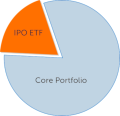The Hijacking of the IPO Market Part 5
Are IPOs Obsolete?
The US IPO is a time-tested process of financial review, disclosure, marketing to investors, evaluation by investors and price discovery. However, a number of private investors are now advocating bypassing the known and trusted IPO process to do something else – direct listings.
The direct listing advocates claim that the traditional IPO process is flawed, undemocratic and obsolete. As we shall see, their arguments are a smokescreen for self-serving interests.
IPO v. Direct Listing
The fundamental difference between a traditional IPO and a direct listing is that the IPO raises money for the company and the direct listing raises none. Second, a direct listing enables insiders to liquidate their shares immediately, without waiting for the normal 180-day lock-up period. Last, IPOs have a two to three week road show to meet investors and answer their questions, while a direct listing has a single, highly scripted investor day webcast.
In the traditional IPO process, regulations protect the investor from getting promotional business forecasts from the company, ensure that they know precisely how many shares are offered and allow them to kick the tires. Importantly, the lock-up protects the new public investors from insiders dumping large amounts of their shares immediately after the IPO.
| IPO Process Protects Investors |
||
|---|---|---|
| Traditional IPO | Direct Listing | |
| Objective | The issuing company raises money, usually to fund future growth. | No money is raised because all shares are offered by existing shareholders, not the company. |
| Lock-up | Restricts insiders from selling for 180 days. | None. Insiders can sell immediately. |
| Information for investors |
S-1 prospectus, book-building roadshows and one-on-one meetings. No forward-looking guidance until after the offering. | S-1 prospectus, investor day with webcast. The company can make forward-looking financial guidelines once effective. |
Why Insiders Like Direct Listings
The main attraction of the direct listing for insiders stuck with illiquid investments in tech unicorns is their ability to liquidate large amounts of shares quickly. Without the protection of the lock-up, a direct listing is streamlined, fast and efficient. Here are the main arguments advanced by direct listing proponents to bamboozle issuing companies and potential investors.
-
Money on the Table. This canard comes from an academic argument that because many IPOs are priced at a discount to publicly-traded peers the issuer leaves money on the table. Thus, direct listings are superior because they may remove the incentive for public investors to make quick money.
What? In the real world, the average IPO discount is 15% because it has been shown over time to attract investors. In a successful IPO everyone makes money: the investors, the company and the bankers. In a direct listing only the insiders do.
- Undemocratic. This assertion is based on the specious argument that the investor day webcast puts all potential investors on equal footing. Wrong. In both the traditional IPO and the direct listing large institutional investor still get favored treatment.
- Obsolete. Silicon Valley explains away the disinclination of public investors to pay inflated prices for over-the-hill tech unicorns by saying public investors are not “evolved”. These “unevolved” investors are only looking for capital appreciation, and fail to appreciate the holistic experience of owning great companies the way great investors (e.g., Silicon Valley) do.
The Conclusion
Silicon Valley investors are sitting on billions of dollars in illiquid investments in approximately 200 large tech US unicorns for which they know public investors will refuse to pay inflated valuations. Many of these companies, like Uber, have passed their periods of peak growth. As a result, the IPO debuts of these companies have been busts and future unicorns will meet the same fate.
Direct listings will probably not be the solution to their dilemma because public investors may be “unevolved” but they aren’t stupid. Slack’s current price is well below first day trading and Spotify’s performance has been unimpressive.

While a sample of two is not dispositive, it is a warning that direct listings are a bad deal for public investors. Traditional IPOs may not be perfect, but they are a tried and true way of balancing the interests of the issuing companies and their investors with those of new public investors.
Next Up
The NYSE's newly-proposed rule for direct listings is a bailout for unicorn investors.
And in conclusion, our recommendations to make the IPO market more efficient and transparent.
Hijack Series
Part 1: How the IPO Market Is Being Hijacked
Part 2: How Government Regulations Nearly Killed the IPO Market
Part 3: How the JOBS Act Abuses Most Public Investors
Part 4: How the IPO Market went from Dot.com to Unicorn Bubble
Part 5: Why Direct Listings Are Fake IPOs
Part 6: The Direct Listing Bailout for Unicorn Investors
Part 7: How to Promote and Protect Healthy Capital Creation
Become a Pro
Sign up for a free trial of IPO Pro.


